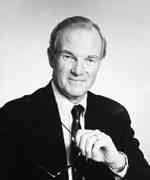Lew Uhler carries a lot of credibility as the head of the National Tax Limitation Committee. He has a storied career as a champion of the taxpaxer. I think his first blush assessment of the Governor’s "BIG BONDS" proposal is worthwhile for everyone to consider:
TAXPAYERS SHOULD DEMAND BOND SPENDING SAFEGUARDS
FROM THE LEGISLATURE
 “As always, in a major new spending measure of the kind the Governor is proposing, the ‘devil is in the details.’ Taxpayers would be well advised to await the details and demand accountability and assurances before making a final judgment. The Governor has proposed; let’s see if the Legislature is willing to ‘dispose’ in a way taxpayers can endorse,” said Lewis K. Uhler, President of the National Tax Limitation Committee.
“As always, in a major new spending measure of the kind the Governor is proposing, the ‘devil is in the details.’ Taxpayers would be well advised to await the details and demand accountability and assurances before making a final judgment. The Governor has proposed; let’s see if the Legislature is willing to ‘dispose’ in a way taxpayers can endorse,” said Lewis K. Uhler, President of the National Tax Limitation Committee.Uhler continued, “California’s infrastructure, especially our roads and highways, are in desperate need of expansion and repair. There is no debate about that. It is how we pay for it that is at issue.
“General obligation bonds are an appropriate funding source if the proceeds are actually used for construction of ‘hard assets’ that have a useful life longer than the pay-off period of the bonds (like the mortgage on a home).
But $68 billion of new debt, even over 10 years, is huge and should not be undertaken unless taxpayers of California are given some firm assurances regarding fiscal discipline, efficiency and accountability with respect to bond debt and the use of the bond proceeds. These assurances requiring legislative action should include:
A constitutional limit on future debt service as a percentage of general fund revenues so as to protect California’s bond rating (the Governor’s 6% appears reasonable);
Getting a bigger bang for our highway buck by reducing the role of extraordinarily inefficient CalTrans in favor of local transportation agencies, public/private partnerships and creative new solutions, such as using the airspace above existing freeways for automated, high-speed automobile corridors;
Reducing the cost of all public works, including schools, water projects, roads, etc., by waiving/repealing “Little Davis-Bacon” which requires paying the highest, rather than competitive, wages;
Uniquely local projects should be paid for by local bonds, and those improvements susceptible to user fees, such as bridges, where the beneficiaries are easily defined should be constructed from the proceeds of revenue bonds paid through tolls;
Streamline environmental requirements so that infrastructure can be improved/built quickly and precious bond funds are not dissipated on “mitigation measures."

